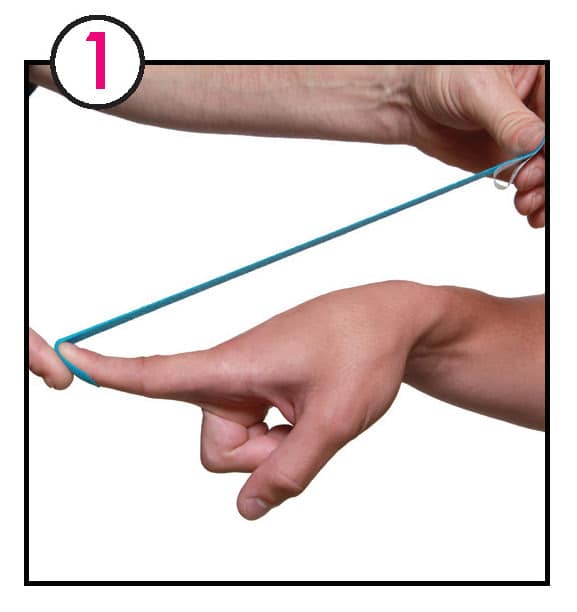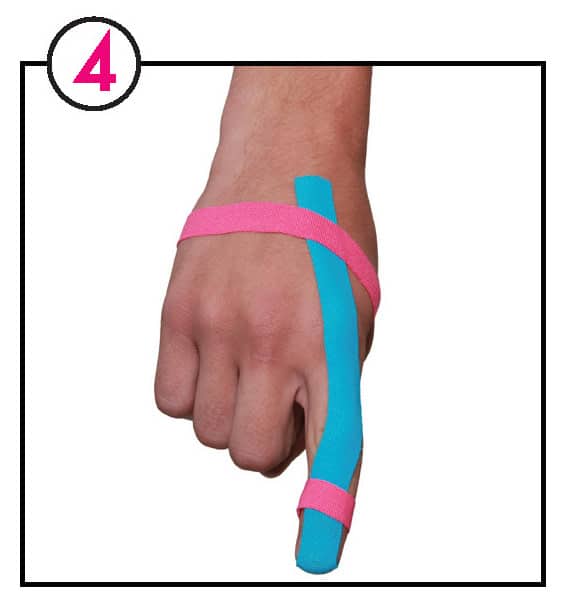Mallet Finger
A Mallet Finger is the result of the finger being in an extended position and forced into flexion by a direct trauma. The extensor digitorum tendon is avulsed from the base of the distal phalanx. The tension of the flexor tendon pulls the distal phalanx into flexion giving the appearance of the head of a mallet.
The Kinesio Taping Technique will assist by limiting the distal phalanx movement into flexion. If the patient has sustained a mallet finger, which has resulted in the extensor tendon being avulsed, this needs to be treated in a splint, or surgically repaired. If the patient has sustained a mild injury, recovering from treatment in a splint or surgery, the Kinesio Taping Method will be beneficial.
APPLICATION OF THE FUNCTIONAL CORRECTION TECHNIQUE TO LIMIT DISTAL PHALANX FLEXION.
 Get More Taping Applications Like This In Clinical Therapeutic Applications of the Kinesio Taping Method: 3rd Edition
Get More Taping Applications Like This In Clinical Therapeutic Applications of the Kinesio Taping Method: 3rd Edition







